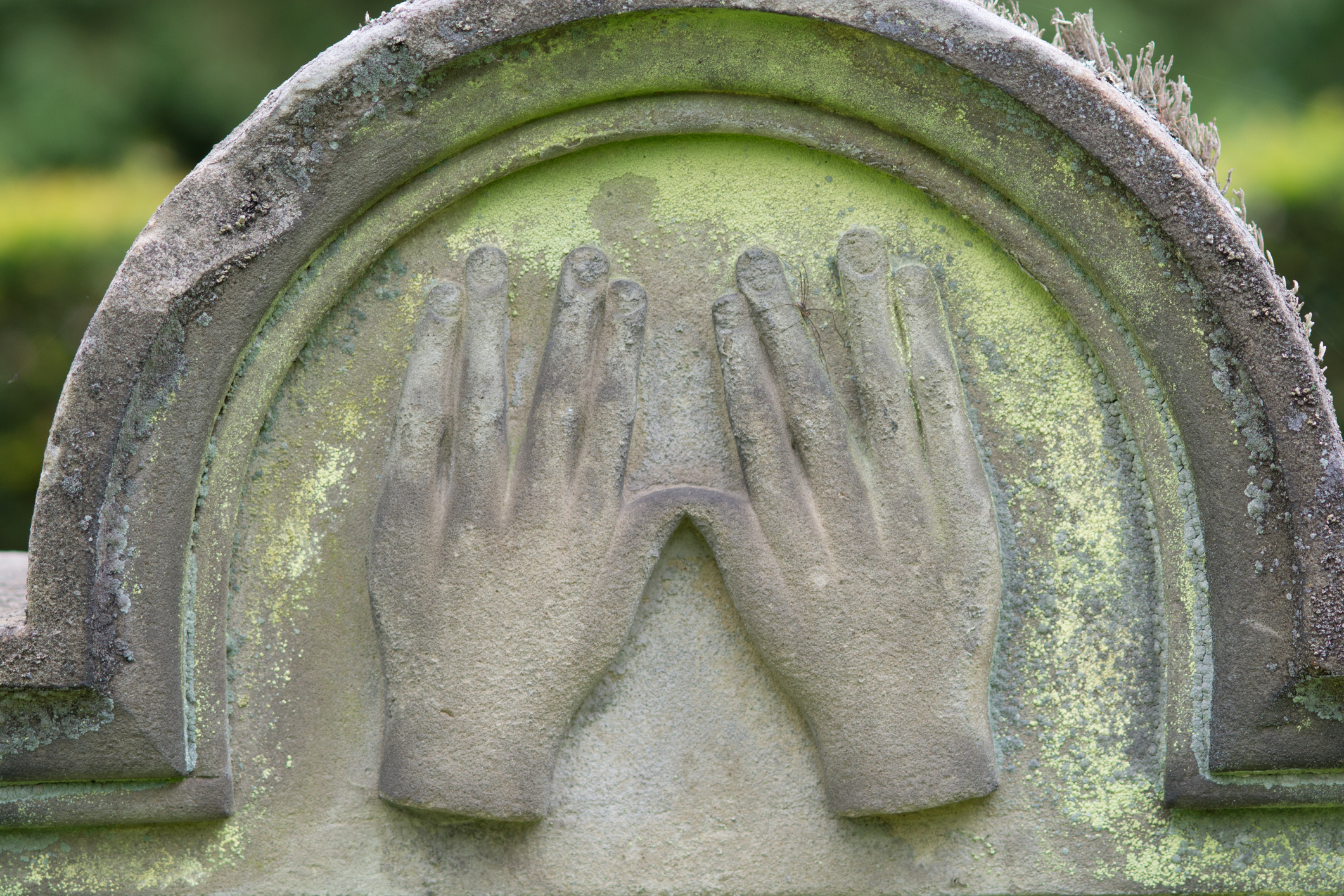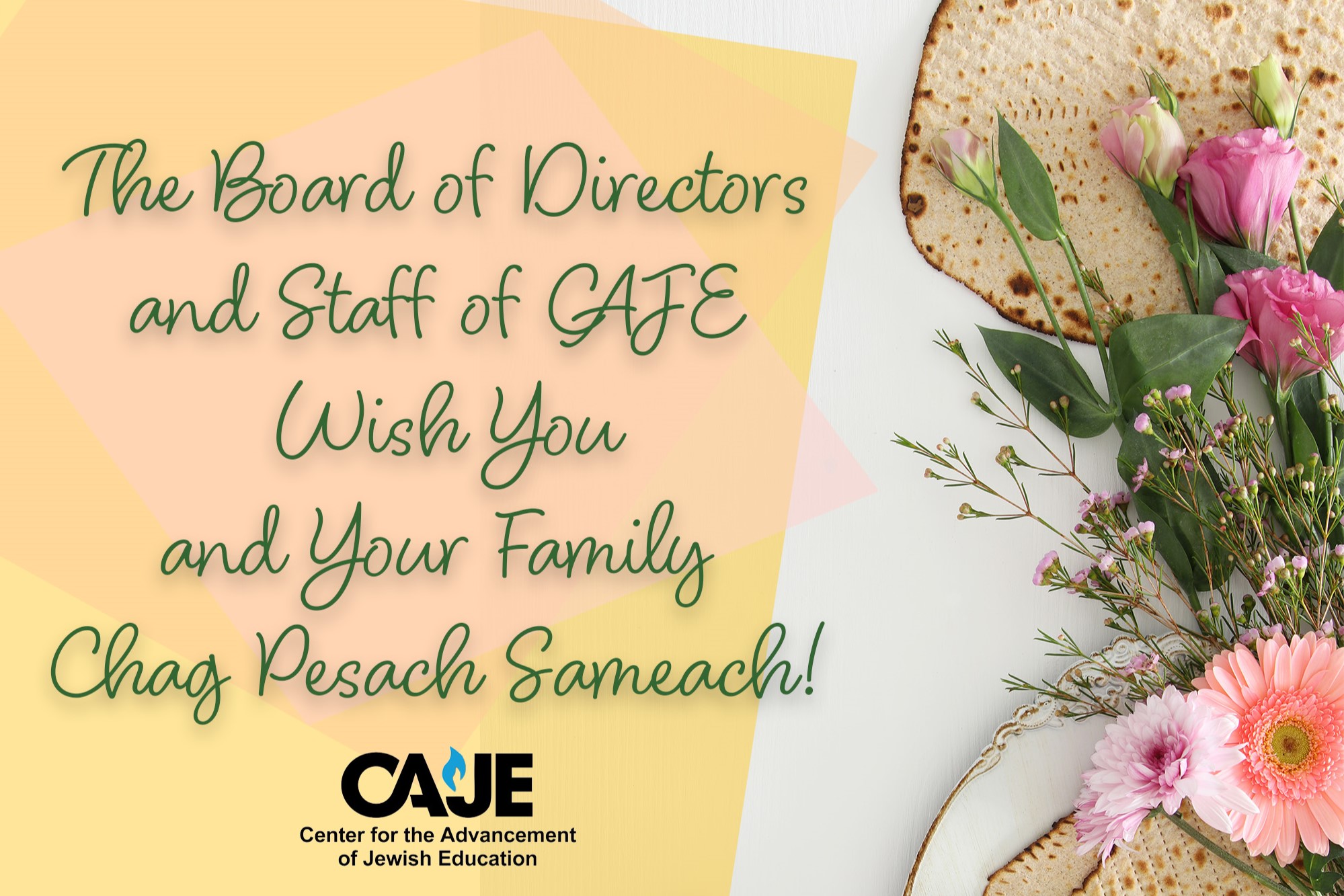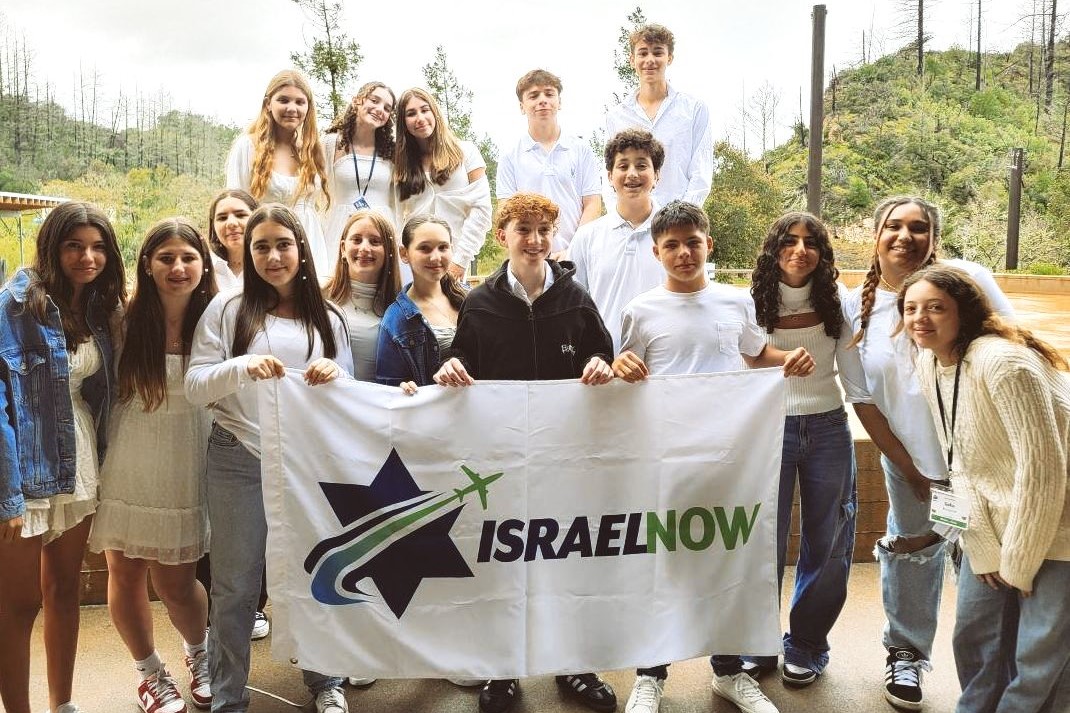#BlessingsIRL


This week’s parsha is Naso, and in it is the very well-known Birkat Cohanim or priestly blessing, the one you hear at Bar and Bat mitzvahs, weddings, around the Shabbat dinner table and of course during services:
May the Holy One bless you and watch over you;
May the Holy One deal kindly and graciously with you;
May the Holy One bestow favor upon you and grant you shalom.
These words are the oldest text from the Bible that we have physical evidence of.

This is an enlarged replica of what was found at an archaeological dig right outside the walls of the Old City of Jerusalem. I’ll pass it around so you can see it up close.
The original discovery was a tiny rolled up silver scroll with the words of Birkat Cohanim / the priestly blessing engraved on them, apparently worn as an amulet that was buried on the body of an unknown Israelite in their tomb.
I say “Israelite” because through carbon dating we know the amulet dates to the First Temple period, meaning it is 2500-3000 years old, before we were exiled to Babylonia and became known as Jews.
As you’ll see if you know Hebrew, you won’t be able to read what’s written on it because the block letters we now know as Hebrew were developed in Babylonia during the exile.
So this object points to how ancient we are as a people and perhaps it’s no coincidence that the earliest physical evidence we have from the Torah… are words of blessing.
It reminds me of the many blessings that I have been privileged to enjoy.
First to Lily Serviansky, as our community’s campaign chair and as a past Chair of CAJE, I want you to know that you have been a true blessing in my life and my leadership development, with all due respect to Rabbi Sacks. Anyone who knows Lily knows she is an incredible strategic thinker; she’s great at discerning the underlying factors involved in a situation and when the chaos is swirling, Lily gets even more calm and focused, applying her even emotional temperament to whatever is happening.
Lily was exactly what I needed during her tenure as Chair and I’m blessed to call on her for her wise counsel until today.
And before Lily was Morrie Siegel, who saw CAJE as a little business that he was running alongside me. Just as I was trying to figure out all the complexity of the operations of CAJE, Morrie was exactly what I needed during his tenure as Chair and I’m blessed to call on him for his wise counsel until today.
And before Morrie was Barbara Black Goldfarb, who saw CAJE within the complexity that is this community and helped me navigate that, which made her exactly what I needed during her tenure as Chair and I’m blessed to call on her for her wise counsel until today.
And now, thank G!D, I have Sara Bejar, who rolls up her sleeves and figures out solutions to issues we are experiencing today, and that’s exactly what I need right now.
To me, the lesson for all of us is that the volunteers who give us -- as the saying goes -- their time, treasure and talent, are exactly what we need, if ...we are able to open up and receive what they have to teach us.
Because let’s face it, we professionals sometimes see volunteers as “obstacles to be managed” or “objects to be controlled.”
Yet, short of an abusive relationship, which should be a redline for every one of us, volunteers are passionate about their service, or they wouldn’t do what they do for our organizations.
We have to be asking ourselves, always: How can we value them for their passions, their strengths, and their contributions, rather than focusing on whatever is frustrating us?
In other words, how can we learn to perceive their blessings and amplify them?
The same with staff. We all have our strengths and weaknesses; that’s what it means to be human, rather than AI.
How can we value our colleagues for their passions, their strengths, their contributions, rather than focusing on whatever is frustrating us?
And that’s what being head of CAJE means for me. I learned very early on, having sat on the other side of the Executive Director desk for many more years than on the Exec side, that my colleagues are the orchestra and I am the conductor. Without them, there is no music.
Of course, after I realized that, I had a slight panic attack — so maybe they don’t really need me?
And the answer, on one level is, yes actually / if you are blessed to find and cultivate really great professionals like I have at CAJE who know what they are doing, they don’t need you to do their job.
A conductor needs an orchestra to do her job, but an orchestra can perform without a conductor... However, the orchestra won’t perform to its highest possible capability.
Because we all need someone to step back and appreciate how the parts can combine together into the best possible whole.
We need someone who will challenge the violins to play fortissimo and the horns to play pianissimo and to encourage the cymbals to find their moment and remind the piccolo to rise above the din, and so forth.
As conductors, we have to rethink the strategy not only for each instrument, but for each musical piece, for each venue, for each time period in the life of the musician and for the orchestra as a whole.
It’s massively complex and… to me, it’s an incredible blessing.
Because when you make music and everything comes together, boy, is that music gorgeous.
I have to give credit to my mentor, Gene Greenzweig, zichrono livracha, who was an amazing role model and tried so hard to juggle all of these complex factors when he was the conductor for CAJE.
I want to give a shout out to Michelle Labgold, my supervisor, who models caring deeply about her staff every day, and to Jacob Solomon, who models caring deeply about this entire community every day.
My deepest thanks go to the staff of CAJE who patiently (and sometimes impatiently, you know who you are) wait for me to figure out the score, to discover the best strategy for bringing out the viola more, to determine how to mitigate the issues with a particular concert hall and metaphorically so forth.
I believe in your abilities so much and I pray you believe equally in mine, and forgive me when I don’t live up to your expectations.
And think about it, to know that you are truly seen for all the pluses and all the minuses and are still appreciated – which is, I pray, the atmosphere we have created at CAJE-- now that’s a blessing!
Acharon acharon, haviv b’yoter — last, but most important, is family.
I wish my parents could be here to see this day. They would have been so happy and I wish my son Matan could have been here, but that wasn’t meant to be.
Thank you, Rosenbergs, for welcoming me into your raucous clan, for being open to a Reform rabbi in your midst, and for being so very kind.
And to Avi, my besheirt, you’ve taught me so much — what deep and patient love feels like, what gratitude does for the soul, what boundaries are, all the good stuff. And you teach it not with words, the way I generally do, but with your very being. You are the foundational blessing of my life.
So of course I cannot close without coming back to words of Torah. I can hear my father’s voice now — “You’re a rabbi… do rabbi things….”
So let’s go back to Birkat Cohanim, the 3000 year old blessing.
The structure of the prayer is nothing short of extraordinary, a precise geometric construct, quite intentional in design.
The first line in Hebrew is comprised of 3 words, the second line 5 words, and the third line 7 words. 3, 5, 7.
The first line contains 12 syllables, the second 14 syllables, and the third 16 syllables. 12, 14, 16.
The symmetry even extends to the letters: The first line contains 15 letters, the second 20 letters, and then (can you guess?) 25 letters.
None of this is by accident.
If the three-part blessing grows from beginning to end, if each of the three stanzas builds and expands upon the previous verse — at least in the number of letters, syllables and words— then it would stand to reason that the meaning of those words, that the content itself, increases in importance as well.
May the Holy One bless you and guard you — commentators say this refers to physical blessings -- food, clothing, shelter, to feel safe with the basics we all need.
May the Holy One deal kindly and graciously with you — this refers to emotional blessings -- love, light, chen / grace, the relationships and connection we need with others.
May the Holy One bestow favor upon you and grant you shalom — this refers to spiritual blessings — to being able to feel at ease, at peace, to feel whole (shalem), to feel we are enough.
And this “enoughness,” this “wholeness,” this “equanimity” contained in the word “shalom”— these are the greatest blessings of all because they include everything that came before.
May each of you receive an abundance of physical blessings and emotional blessings and especially spiritual blessings as you seek to do your holy work in this community.
Shabbat Shalom!




